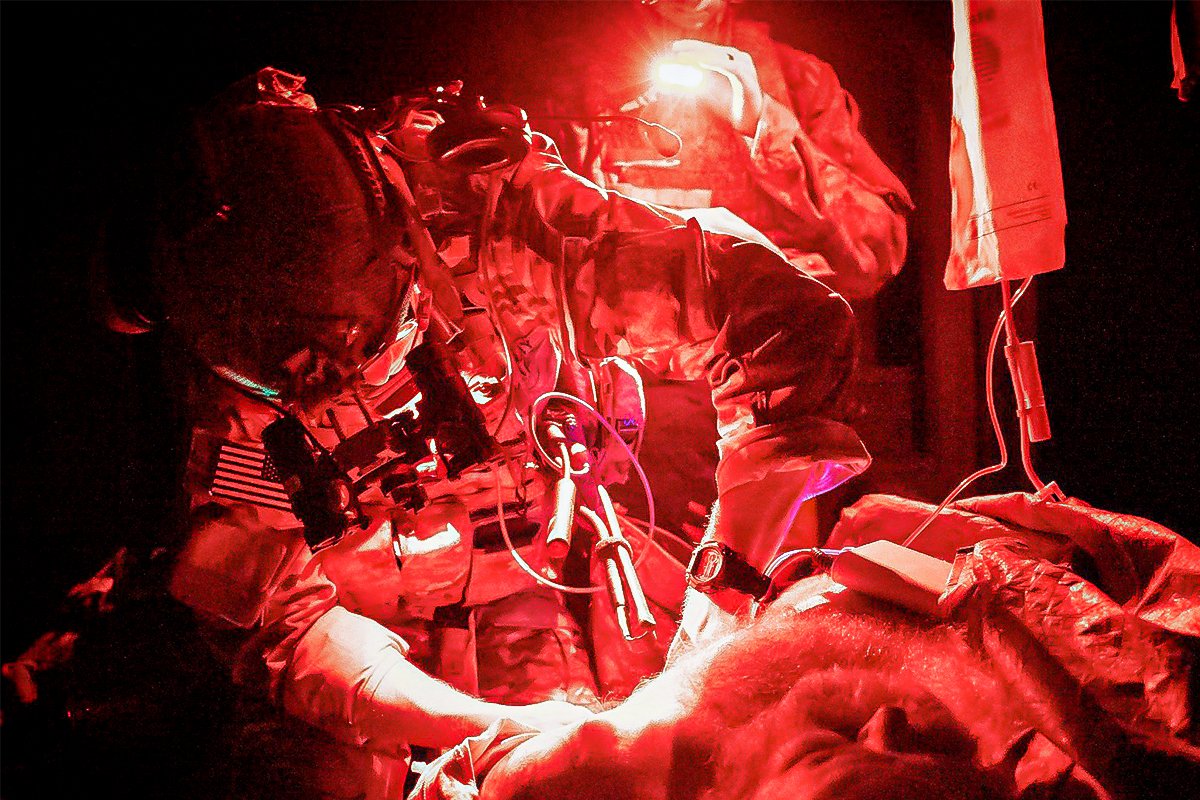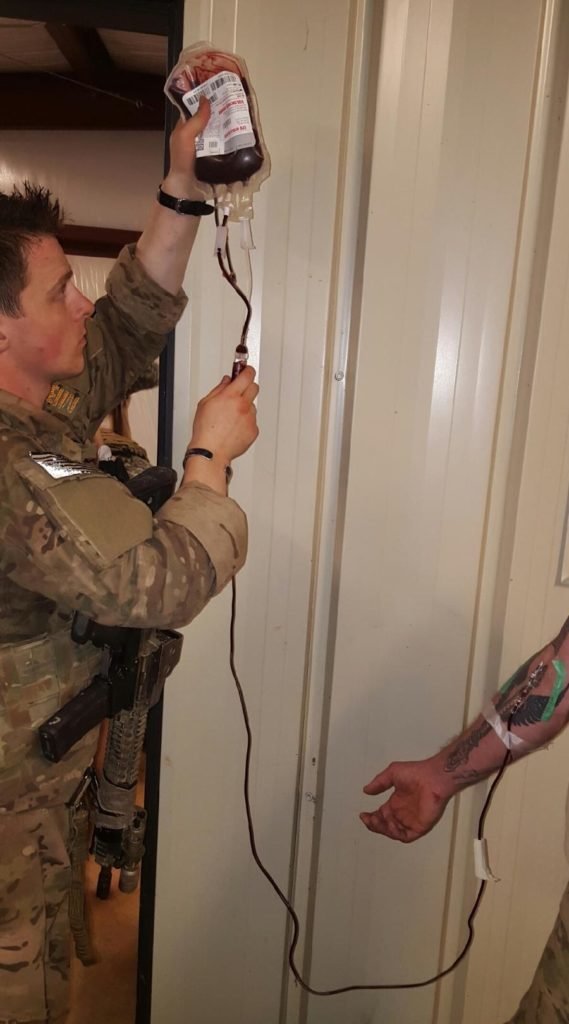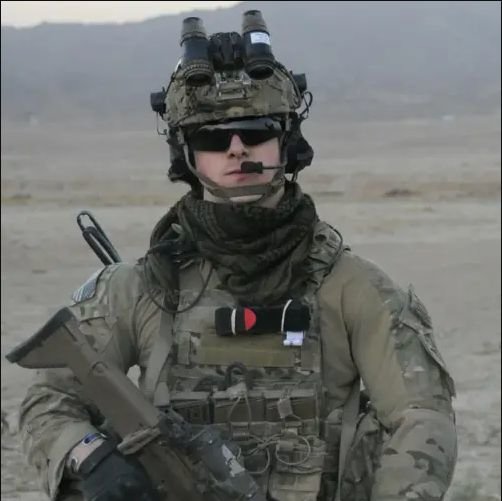This Is How Rangers Are Performing Blood Transfusions on the Battlefield

Photo courtesy of 75th Ranger Regiment.
In 1984, General John Wickham officially charged the 75th Ranger Regiment with the responsibility to “lead the way in developing tactics, training techniques, and doctrine for the Army’s Light Infantry formations.” The Regiment has undeniably lived up to Wickham’s Charter, especially with their invaluable innovations in the field of combat casualty care.
Those innovations include the Ranger O Low Titer (ROLO) Whole Blood Program for battlefield blood transfusions, an award-winning program pioneered by the 75th Ranger Regiment’s Major Andrew D. Fisher that is now being adopted by the rest of the Department of Defense. But how do Rangers actually transfuse blood on the battlefield?

A fresh, whole blood transfusion is the holy grail for treating patients who have lost life-threatening amounts of blood (also known as massive hemorrhage), but the logistical challenges of collecting and transfusing fresh blood in combat scenarios are daunting. If the wrong blood type is given to a patient, it will trigger an adverse immune reaction that can result in death. Even with universal-donor blood (type O), a high titer level — a measure of antibody proteins — in the blood can potentially trigger an immune response that is dangerous for a critically wounded patient.
Bloodborne pathogens are another concern, as is the time it takes to collect blood. Hemorrhagic casualties have precious little time to spare; even if a donor is already next to the casualty, it can take more than 15 minutes to collect the blood and perform the transfusion.
Despite these challenges, the benefits of whole blood transfusions over other resuscitative techniques have driven the Ranger Regiment to standardize their use on the battlefield. Although fresh whole blood is the best replacement, Rangers primarily use whole blood that has been stored cold and carried by the medics on missions. This cold-stored whole blood can be rapidly warmed by a buddy lite or similar device and transfused into a patient with greater speed than fresh whole blood can be collected.

The resuscitative power of cold-stored whole blood, while somewhat less than that of fresh whole blood, is much greater than alternative techniques, such as using reconstituted blood. Reconstituted blood consists of taking individually packaged components of human blood, such as packed red blood cells (PRBCs), freeze-dried or fresh-frozen plasma (FDP and FFP), and platelets, and administering them in a 1:1:1 ratio that mimics whole blood.
The storage and acquisition of these components present their own logistical difficulties, such as the short shelf-life of platelets. Most importantly, reconstituted blood does not return the same level of oxygen-carrying capacity and clot-formation functions to a patient as whole blood. The data support the intuitive conclusion that when whole blood is lost, the best thing to replace it with is more whole blood.
The Ranger Regiment has designed the ROLO Program to mitigate the potential for adverse reactions of battlefield whole blood transfusions. To that end, Group O, low-titer Rangers who are free of bloodborne diseases are identified through a series of highly reliable blood tests, and these Rangers (often simply called ROLOs) are placed on a roster of available donors for their platoons.
The hope is that blood transfusions will keep critical casualties alive long enough to get them to the surgery or surgeries that will ultimately save their lives.
Additionally, other Ranger infantrymen — usually team leaders — are trained as Advanced Ranger First Responders (ARFRs) to assist the medics in treating casualties or in collecting and transfusing blood, if needed. In the event that more blood will be needed than the two to four units of cold-stored whole blood being carried by the medic, ARFRs are prepared to collect fresh whole blood from the platoon’s ROLOs.
Generally, the first trained individual to reach a casualty will call for the blood transfusion, if needed; they identify that need based on the casualty’s mechanism of injury and vital signs. For example, if a casualty has suffered a gunshot wound to the chest or abdomen, or is showing signs of shock from blood loss, the Ranger treating the casualty will immediately call for a transfusion. In addition to transfusing reheated cold-stored whole blood, Ranger medics also give the casualties tranexamic acid (TXA), which helps the patient maintain the integrity of blood clots by counteracting their body’s natural mechanisms of degrading clots.
It is imperative that critically wounded patients are moved to a hospital for surgery as soon as possible because these resuscitative techniques can only buy them a limited amount of time. If a casualty is in bad enough shape to require a battlefield blood transfusion, they likely need surgery. The hope is that blood transfusions will keep critical casualties alive long enough to get them to the surgery or surgeries that will ultimately save their lives.

However, not all casualties can be saved. The first patient to receive a battlefield whole blood transfusion by the ROLO protocol was a wounded enemy fighter in Afghanistan in March 2016. Fisher was responsible for treating the patient on the ground — he reminded himself that “medics do not choose who to care for on the battlefield … [but] treat anyone injured.”
The casualty was given a cold-stored whole blood transfusion, which kept him stable enough to survive a long evacuation and two surgeries. However, despite the success of the transfusion, he eventually died as a result of his wounds. This case serves as a potent reminder that combat medicine is messy, and even life-sustaining medical interventions have their limits.
The 75th Ranger Regiment’s ROLO Program has seen great success. Fisher, Ethan Miles, and the other Rangers who pioneered it have set something in motion that will save countless lives. As the program becomes standard for all group O, low titer service members to be identified as donor candidates, service members across the Department of Defense will reap its rewards.

BRCC and Bad Moon Print Press team up for an exclusive, limited-edition T-shirt design!
BRCC partners with Team Room Design for an exclusive T-shirt release!
Thirty Seconds Out has partnered with BRCC for an exclusive shirt design invoking the God of Winter.
Lucas O'Hara of Grizzly Forge has teamed up with BRCC for a badass, exclusive Shirt Club T-shirt design featuring his most popular knife and tiomahawk.
Coffee or Die sits down with one of the graphic designers behind Black Rifle Coffee's signature look and vibe.
Biden will award the Medal of Honor to a Vietnam War Army helicopter pilot who risked his life to save a reconnaissance team from almost certain death.
Ever wonder how much Jack Mandaville would f*ck sh*t up if he went back in time? The American Revolution didn't even see him coming.
A nearly 200-year-old West Point time capsule that at first appeared to yield little more than dust contains hidden treasure, the US Military Academy said.












